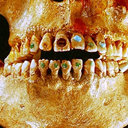Cheminformatics-Based Anticoagulant Study of Traditionally Used Medicinal Plants
Atslēgvārdi
Abstrakts
Medicinal plants, as a complementary medicine, have been used to treat various diseases since ancient times. These plants have numerous beneficial applications and are the source of certain conventional drugs. In diseases such as stroke and ischemia, which are caused by several factors, abnormal coagulation is an important causative factor. Accordingly, novel and effective therapies such as herbal remedies should be practiced to prevent such lethal diseases.
Using the available databases such as Google Scholar and PubMed, the previously reported anticoagulant compounds and plants possessing anticoagulant activity were identified and collected in two separate lists. Next, the fast and cost-effective cheminformatics methods incorporated in PubChem were applied to detect some compounds similar to reported anticoagulants. Subsequently, 15 native medical plants of Iran containing the potential anticoagulants were selected. The selected plants were purchased and chopped, and the potential compounds were extracted by ethanol. Then three concentrations of extracts (1, 10, and 100 µg per ml) were made. Finally, anticoagulant effect of the selected plants was evaluated by in vitro prothrombin time and activated partial thromboplastin time coagulation tests.
Among the 15 selected medicinal plants, three plants, including Terminalia bellirica (P=0.0019), Astragalus arbusculinus (P=0.0021), and Origanum vulgare (P=0.0014) showed a more promising anticoagulant effect in comparison to the control.
The anticoagulant activity was identified for the first time in these three plants. Further in vivo study and mechanism of action assay are required to be performed on these three plants, which could be suitable candidates for use as natural anticoagulant medicines.



